Variations of the Professional Solution
VARP 

 (D)
(D) 
|
Alternatively, Black could also continue with occupying White's liberties, and connect his second hasami-tsuke stone with a move at |
|
///: The comparison of the final positions in the left half of the board (Professional Solution at the left) shows:
|
|
The comparison of the final positions in the right half of the board (Professional Solution at the left) shows:
In total, White is one point better than in the main line of the Professional Solution. White wins by one point. |
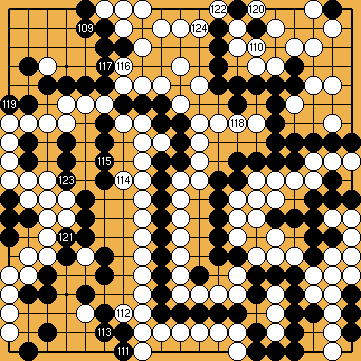
 738d
738d :
: : (122
: (122  738f
738f later.
later.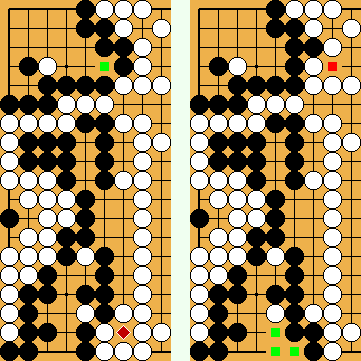
 ).
). ).
). ) at the top.
) at the top.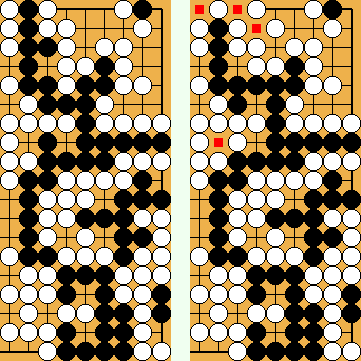


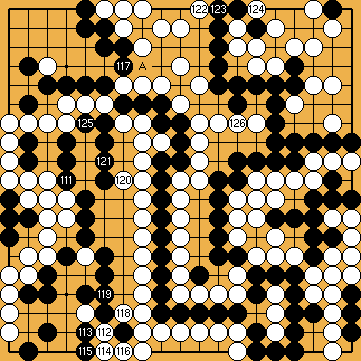
 :
: :
: :
: .
.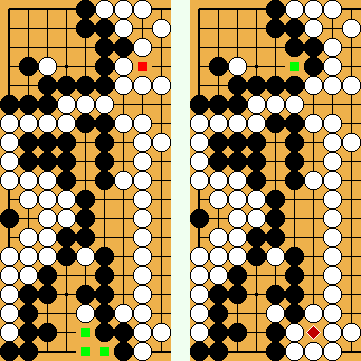
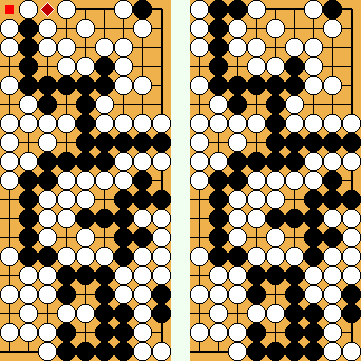
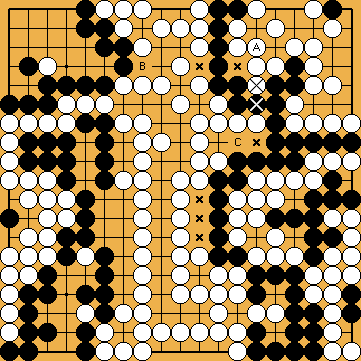
 738
738 and
and  are miai.
Black's large group in the upper right has seven liberties (
are miai.
Black's large group in the upper right has seven liberties ( ,
,  /
/  exchange earlier in the game.
exchange earlier in the game.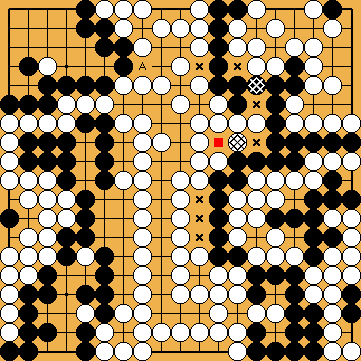
 , the point of Michael Redmond's kikashi.
, the point of Michael Redmond's kikashi. , instead of in the (earlier) bamboo joint, securing one additional point of territory in the centre (
, instead of in the (earlier) bamboo joint, securing one additional point of territory in the centre (